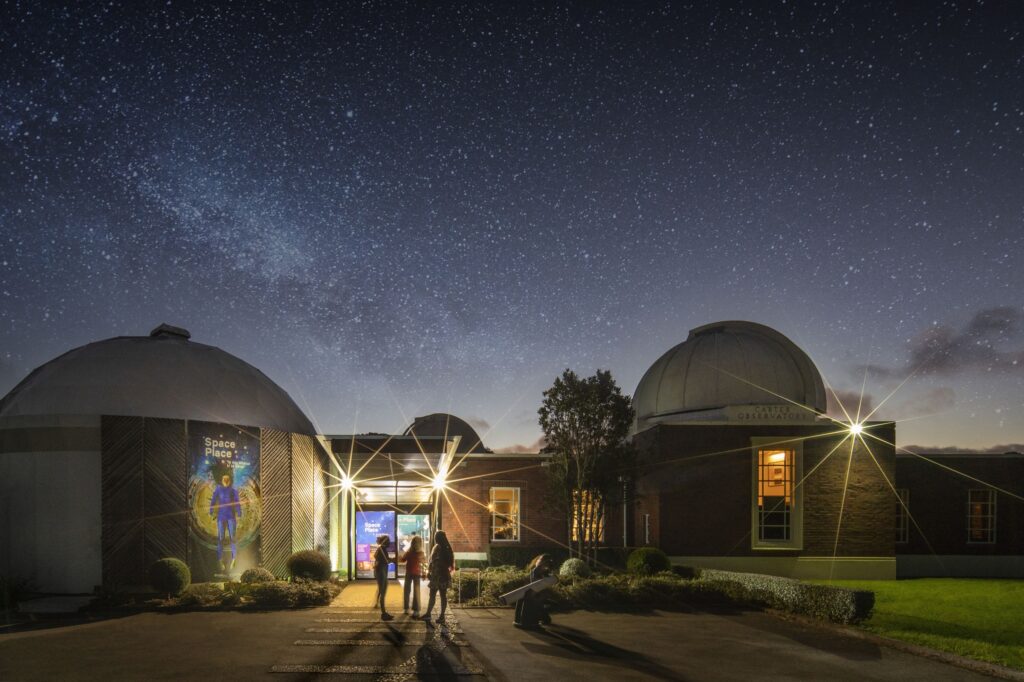Space Place shines a light on Puanga and Matariki
By Colin Smillie, Experience Wellington’s Public Programmes Manager Science.
By Colin Smillie, Experience Wellington’s Public Programmes Manager Science.

At five o’clock on a cold and still morning last year, I joined 500 members of the public for a unique New Zealand experience as we gathered to share kai on Aotearoa’s first public holiday to celebrate Matariki. A karakia was given, the stars rose above the hills and images of loved ones who had passed away in the previous year were displayed.
As a science communicator, I know that the Matariki star cluster, visible around the world, holds significance in many different cultures, but it’s hard to put into words how moving it was to watch the sunrise on the Māori New Year. It felt like a celebration that excluded nobody and included everyone.
Matariki sits relatively near the Earth, just 444 or so light-years away, so it’s the most easily seen star cluster in our skies. Ancient Greeks named it the Pleiades or the Seven Sisters, because they could see seven stars with the naked eye. In Japan, it’s known as Subaru, meaning ‘unite’. Here in Aotearoa, Māori astronomers see nine stars: Te Iwa o Matariki, the nine stars of Matariki.
This important star cluster highlights our close connections to nature, encouraging us to remember the past, celebrate the present, and look towards the future. Across Aotearoa New Zealand iwi, hapū, and whānau tell different pūrākau, or stories, connected with Matariki. In Wellington, at Space Place Te Ara Whānui ki te Rangi, we celebrate Matariki and Puanga by sharing these stories with our wider community.
The public holiday is centred around the Matariki star cluster appearing in the early morning sky, but the star Puanga is also used as the marker for the beginning of the Māori New Year. This is because Puanga, or Rigel the brightest star in the constellation known as Orion, rises earlier and higher in the sky than Matariki, so is more visible in some parts of the country before the rising of the sun.
In Porirua, Ngāti Toa iwi sees Matariki much more easily than in Whanganui-a-Tara, as the hills surrounding Wellington tend to block the view of the star cluster. On the west coast of the North Island, Taranaki Whānui use Puanga as the marker for the start of the New Year. When Puanga rises in the morning sky above Taranaki Maunga, this is the signal for new planting. In Ōtepoti Dunedin, Kāi Tahu celebrates both Puaka (Puanga) and Matariki because being at a lower latitude means Matariki is a little too low on the horizon to be easily seen behind the city’s many hills.
To many iwi, the setting of Matariki in the evening sky signals the beginning of the harvest season. The rising again in the pre-dawn sky several weeks later, aligning with the moon in its third phase, signals the time to start planting and preparing for the coming year. That’s when communities gather to give thanks for the earth’s abundance, to reflect upon the year that has gone, and to share hopes and aspirations for the year ahead. It is a reminder of the importance of living in harmony with nature and a time to commemorate those who have died in the previous year.
If you want to learn more about Puanga and Matariki and the significance of the season, join us next week at Space Place Te Ara Whānui ki te Rangi or visit anytime to find out more about mātauranga Māori and our place in the cosmos.